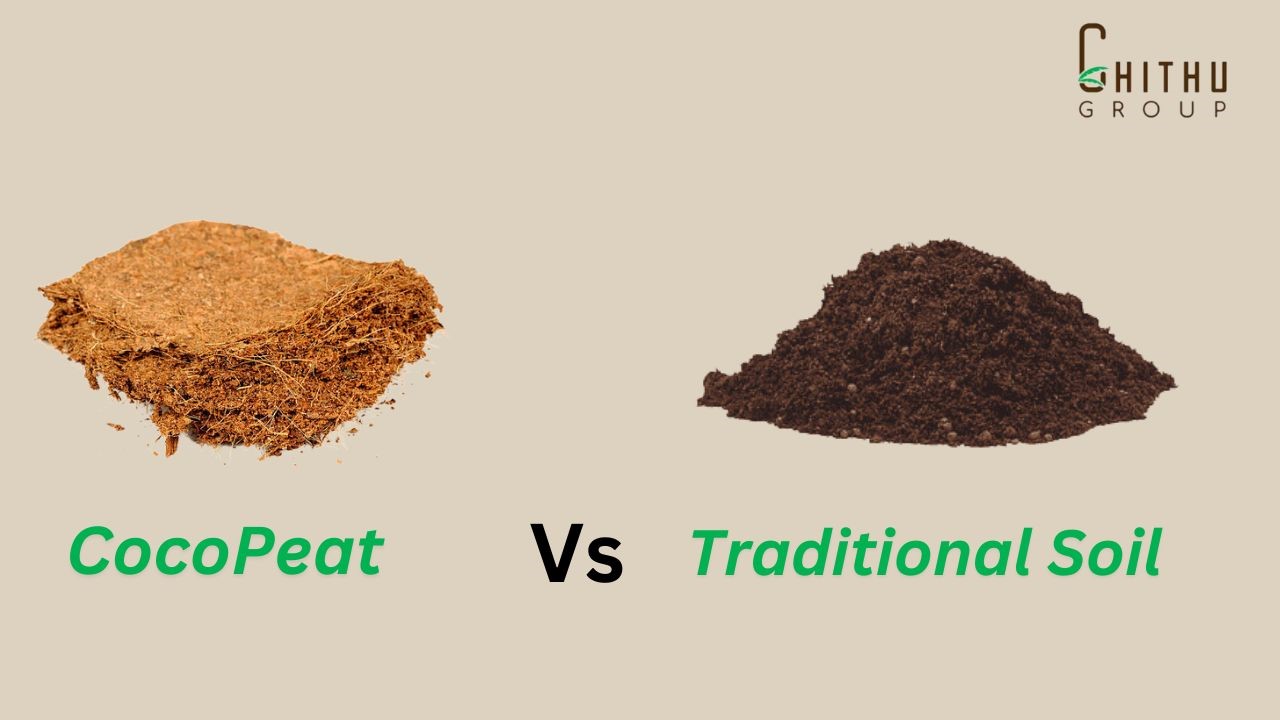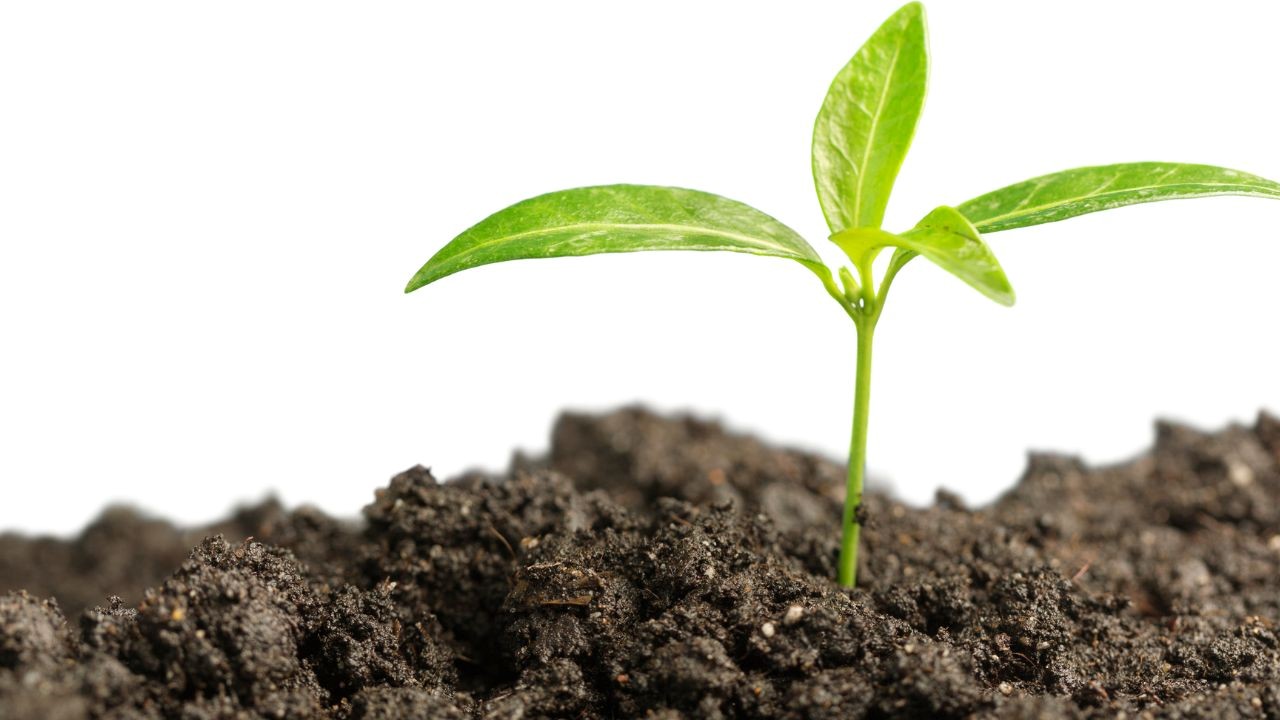



Farming, the age-old practice that sustains our food supply, has seen its fair share of innovations over the years.
One such innovation is using coco peat, a coconut coir-based growing medium, as an alternative to traditional soil. But which one is better for farming?
Related article : How to use coco peat with soil?
In this article, we'll look deep into the world of coco peat and traditional soil, and compare them in detail.
Coco peat offers several advantages for plant growth and cultivation, making it a sustainable and eco-friendly alternative to traditional soil and peat moss. Here's a deeper understanding of coco peat.
Coco peat is primarily composed of coir fibers and coir pith. Coir fibers are long and wiry, while coir pith is the spongy material that surrounds the fibers. The pith gives coco peat its moisture-retaining and aeration properties.
Coco peat is an environmentally friendly product because it is a byproduct of the coconut industry. It utilizes the waste material from coconut husks, which would otherwise be discarded or burned, contributing to environmental pollution.
Coco peat can hold a large amount of water (around 8-9 times its weight), making it an excellent medium for moisture-loving plants. It retains moisture well while allowing excess water to drain away, preventing waterlogged roots.
The coir fibers in coco peat create air pockets in the growing medium, providing adequate aeration to plant roots. This prevents soil compaction and promotes root health.
While coco peat itself does not contain many nutrients, it can retain and release nutrients to plants gradually. This allows for better control over nutrient delivery in hydroponic and soilless growing systems.
Coco peat is resistant to pests, diseases, and fungal growth, a common issue with traditional soil and peat moss.
Sterilizing and reconditioning the Coco peat can be reused for multiple growing cycles. This makes it a cost-effective option in the long run.
Coir fibers from the coco peat can also be used for erosion control in landscaping and soil stabilization projects.
Coco peat is commonly used in various forms, including compressed bricks or blocks, loose fibres, and blended mixes with other growing media. It is especially popular in hydroponics, container gardening, seed starting, and as a component in potting mixes for potted plants. When using coco peat, following specific guidelines for rehydration, nutrient supplementation, and pH adjustment is essential to ensure optimal plant growth.
Coir pith, commonly called coco peat, is a natural fibre from coconut husks. It's renowned for its excellent water retention properties, making it a popular choice for gardening and farming.

Coco peat boasts impressive water retention, aeration, and disease resistance. It's also eco-friendly, as it utilizes a waste product from the coconut industry.
However, coco peat requires proper rehydration and can be expensive.
The naturally occurring mixture of mineral particles, organic matter, water, and air that makes up the topmost layer of the Earth's crust is traditional soil, garden soil or topsoil.
It is widely utilized in agriculture and gardening since it is the environment in which most plants naturally thrive. Most terrestrial plant development is based on traditional soil, the basis for horticulture and agriculture.
To establish the best growth circumstances for their particular crops or plants, farmers and gardeners frequently evaluate the qualities of their soil and add the proper amendments.

Traditional soil has been the backbone of agriculture for centuries. It offers natural nutrients and microbial diversity essential for plant growth.
But, traditional soil can vary in quality, and its water retention capabilities may not be as reliable as coco peat.
Now, let's compare the two soil types and figure out the suitable one for your plant.
Coco peat excels in nutrient retention, providing a stable environment for plants. In contrast, traditional soil's nutrient content may need supplementation.
Coco peat retains water exceptionally well, reducing the frequency of irrigation. Traditional soil's water-holding capacity varies by type and region.
Coco peat's airy structure promotes root development, while traditional soil may become compacted, hindering root growth.
Coco peat is eco-friendly, utilizing coconut waste. Traditional soil can be depleted over time, leading to erosion and decreased fertility.
Plant health and growth depend on the soil or growing medium you choose. The choice of medium depends on the type of plants you're growing, their specific needs, and your growing conditions.
Ultimately, the right growing medium depends on the unique needs of your plants and your specific growing environment.
The type of crop you're growing can influence your choice. Some plants thrive in coco peat, while others prefer traditional soil.
Climate conditions, such as rainfall and temperature, should guide your decision. Coco peat's water retention may be advantageous in arid regions.
Coco peat and traditional soil each have advantages and disadvantages when it comes to farming, and the choice between them depends on various factors, including the specific crop, environmental conditions, and sustainability considerations.
Coco peat offers several benefits, such as excellent moisture retention, aeration, and resistance to pests and diseases. It is a sustainable option as it utilises coconut husk waste and reduces the need for peat moss extraction, which can harm peatland ecosystems.
If you feel cocopeat is the right choice for growing your plants, then get it from the best cocopeat exporter in India from Chithu Groups.
At Chithu Groups, we specialise in various goods at our specialised production plant, including raw coconut, white coir, brown coir, and coco peat blocks.
Traditional soil, on the other hand, is the natural habitat for most plants and offers a wide range of nutrients and microbial diversity. It is suitable for a broad spectrum of crops and can be managed and amended to meet specific plant requirements.
In conclusion, coco peat is the best medium to grow the plant organically.
As coco peat prioritises plant health, environmental sustainability, and local conditions.